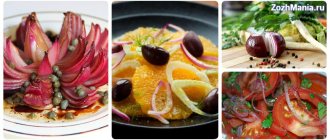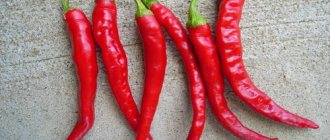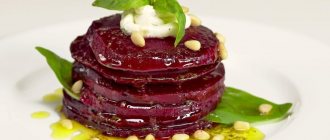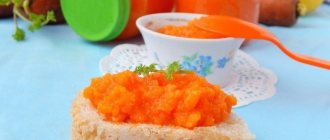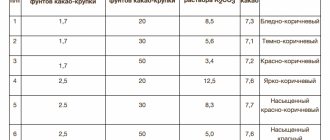Manufacturing secrets
Initially, Martini is made from Italian dry white wine with an alcohol content of 11-13%.
Then, at the stage of adding various herbal extracts, the strength of the drink is artificially increased. The increase in the volume fraction of ethyl alcohol is done deliberately so that the taste becomes more intense, harmonious, and with a rich aromatic bouquet. This is explained simply: the higher the alcohol content, the better the spices and herbal extracts reveal their taste. Each Martini variety has a constant strength. You should also know that if the label of a drink indicates a strength of 14-15%, then it has nothing to do with the brand. This is either a fake or a vermouth from another manufacturer.
Strong types of Martini
- Spirito. The strongest drink in the entire line. This is a herbal liqueur with a bitter-sweet taste and a strength of 33 degrees.
- Bitter. For a long time (before the advent of Spirito) it was considered the strongest Martini. Tincture with a strength of 25%, consisting of pure alcohol and more than 30 types of various herbs, flowers and fruits. This drink is ruby in color, with a unique aromatic bouquet. He is a “regular” at social events and parties.
- Extra Dry. Vermouth with lemon-raspberry aroma. A dry drink with a sugar content of 2.8% and alcohol content of 18%. He was very loved by many rulers of France and Belgium.
Can you drink martinis while on a diet?
Few people have not heard of such a famous alcoholic drink as Martini. Representatives of the fair sex especially love this delicate vermouth.
Nevertheless, not everyone thinks about the calorie content of Martini and whether it can be drunk during diets and when losing weight. This article will tell you more about the composition, energy value and other characteristics of the drink.
First of all, it’s about - this is not a specific type of alcoholic beverage, but an Italian brand for the production of vermouth. It received its name in honor of the Martini & Rossi plant of the same name, located in Turin.
produces not only vermouths, but also sparkling wines. Both drinks are extremely popular among consumers. Girls especially like the delicate taste with light notes of alcohol. Almost no party takes place without this alcohol in a glass.
As we have already understood, this product is widespread not only in its homeland, but also in Russia and Ukraine. At the same time, very few are interested in the calorie content of Martini, which is about 145 kcal per 100 grams.
These indicators are relevant in relation to the most popular white vermouth Martini Bianco. If we are talking about prosecco of this brand, then it would be correct to say that the calorie content of a Martini is 70 kcal. It all depends on what kind of drink the buyer is interested in. Popular types of vermouths and Martini wines with their energy value are given below:
- Martini Rose - 70 kcal.
- Asti - 80 kcal.
- Extra Dry - 110 kcal.
- Brut - 70 kcal.
As for other components, all Martini drinks, the calorie content of which is described above, and the less popular vermouths Rosso, Rosato, Riserva Ambrato and Riserva Rubino have practically no useful substances. The content of proteins and fats in these alcoholic drinks is zero; in some, a small amount of carbohydrates can be observed (up to 20 per 100 g).
Despite its low calorie content, Martini is still an unhealthy product, and this applies not only to the figure. Like any other alcohol, this vermouth, if consumed excessively, can lead to disruption of brain function, has a negative effect on the cardiovascular system, liver and kidneys, and worsens health in general.
With short-term use of Martini, there may be a loss of coordination and the ability to think normally, because everyone knows that under the influence of alcohol, many people commit rash acts, which they regret as a result.
The positive aspects of this drink include its ability to quickly improve mood, fight stress, and relieve tension. In addition, Martini has anti-inflammatory, antiseptic and antiviral effects. Adults can take a small portion of this drink when they feel cold and flu symptoms coming on.
Martini also improves appetite and digestion in general. That is why quite often cocktails with the addition of this vermouth are served as an aperitif.
We have already found out what the caloric content of “Martini” is per 100 grams. Now you need to figure out how to properly drink this alcoholic drink. Those who want to throw a party where Martinis will be served should remember a few important rules:
- Martinis are served in special elongated cone-shaped glasses. If there are none, ordinary rectangular low glasses will do, but in no case glasses or shot glasses.
- It is best to serve this drink chilled to a temperature of 10-15 degrees. To do this, just drop a few ice cubes into a Martini glass.
- Drink in small sips, “stretch out the pleasure.” Many women use a cocktail straw for this.
- You can snack on lemon slices, olives or fresh fruit. The choice of appetizer depends on the type of vermouth.
Another important condition for drinking Martini correctly is a good mood. Without a positive attitude, this drink will not bring the desired pleasure, so it is best to drink it during holidays or parties.
Based on materials from fb.ru
Like any food that enters our body, alcoholic drinks also contain a certain amount of calories. For this reason, people seeking to lose weight are wondering what kind of alcohol they can drink while dieting, so that the drink does not turn out to be too high in calories for the body. In small quantities it is possible, and sometimes necessary, to include in the diet, for example, wine, on which some diets are based.
The answer to the question of what kind of alcohol you can drink while on a diet is not so strict, because each alcoholic drink is healthy in its own way. The leading position is occupied by wines, especially dry and semi-dry ones. They saturate the body with microelements, have a positive effect on blood circulation, and reduce cholesterol levels. In addition, they contain a small amount of calories, but many useful substances. Beer fans also don’t have to completely deprive themselves of their favorite drink. The hops in there are calming, relieve stress, and help you sleep better at night.
Stronger types of alcohol also have beneficial properties, especially when it comes to various balms. A little cognac or whiskey will help cheer you up after a hard day, activate your brain, and serve as a cold prevention, but you need to remember that these drinks are higher in calories than the previous ones. If you are choosing which alcohol is best to drink while losing weight, then feel free to choose wine, a glass of which won’t hurt at all.
In answer to the question of what kind of alcohol you can drink while dieting, it all depends on how many calories it contains and in what quantities you are going to drink. In small cases it will do virtually no harm. A small amount involves 1 glass of wine or beer, 50 grams of cognac or whiskey. At the same time, it is desirable that alcohol enters the body slowly when losing weight, that is, it is better to drink the portion measured out for yourself within an hour and a half.
Wine, especially dry wine, is considered one of the healthiest alcoholic drinks. It has many positive qualities and brings many benefits when consumed in reasonable quantities. Dry wine for weight loss, red or white, saturates the body with a minimum amount of calories (depending on the grape variety), which are also easily broken down. Both types of drink accelerate the breakdown of fats. Other beneficial qualities of dry wine include its ability to maintain youthful skin due to its polyphenol content.
Champagne is a type of wine, so it can also be more or less sweet. This means that anyone who is worried about extra calories should choose drier types of this drink. The best champagne for weight loss is Brut. It contains no more than 3 grams of sugar per 1 liter, or none at all. Brut has the lowest calorie content of all types of champagne. One hundred grams contains 50 kilocalories, so one glass during a feast will not disrupt your diet.
Light beer and weight loss are completely compatible. 1-2 glasses will not provide you with an excessive amount of calories. Be sure to pay attention to the strength. It should not exceed 5%. Darker and stronger varieties are best avoided. It is undesirable to consume all kinds of beer snacks along with beer. They cause thirst and a desire to drink more, but salt retains excess liquid, so the beneficial property of beer to remove liquid comes to naught. In small quantities, beer will not show its destructive effect on hormonal imbalance, leading to obesity.
When choosing alcoholic drinks that can be consumed with less harm while on a diet, you need to consider how much alcohol and sugar they contain. This indicator is different for each type of alcohol, but the more strength and sugar, the more calories. 1 gram of alcohol contains 7 kcal, and 1 g of sugar contains 4 kcal. Since cognac is many times stronger than wine, then the calories in 100 grams of the former are much greater than those of the latter. So which alcohol is lower in calories when dieting? These are sugar-free dry wines.
The number of calories of any drink can be reduced by diluting it, thereby reducing the degree. It is recommended to dilute the wine with water in a 1:1 ratio. For whiskey with cola or soda, the ratio is 1:2. Do not drink more than 350 ml of dry wine, 1000 ml of beer or 120 ml of cognac at a time. If you decide to treat yourself to a portion of alcohol, then the alcohol calorie table will help you not to overdo it with calories and not harm your figure:
The essence of a diet during which drinking alcohol is required is that you drink alcohol, which promotes the breakdown of fats. The only drink that has been observed to have this property is dry wine, but there are other variations of similar diets involving whiskey, martinis and other drinks. The menu is all similar. You need to exclude unhealthy foods (fried, floury, fatty) from your diet, drink plenty of liquids, and drink alcohol during a diet only after meals.
This type of weight loss should last no more than a week, since the diet is very strict. For breakfast there can be 1 boiled egg and a vegetable, for lunch 1 apple, banana or a bowl of lean soup. For dinner, a light salad of fruits or vegetables and cottage cheese are allowed. Alcoholic drink is consumed once a day, more often in the evening. The easiest of the alcoholic diets is weight loss with cocktails. During it, you are allowed to eat as usual all day, and instead of dinner, drink 1 cocktail.
Pierre Dukan, a French nutritionist, has developed a diet for those who need a serious fight against obesity and want to lose not 3-4 kilograms in a week, but achieve much more significant results with consolidation. Losing weight using this method lasts for several stages and alcohol on the Dukan diet is allowed to be consumed only when you reach the third. At other times, the doctor recommends using alcohol exclusively while preparing food. He does not recommend drinking it for the reason that alcoholic drinks lead you astray from the right motivation and deviate from the course.
Any alcoholic beverages can cause a serious blow to your efforts to lose weight. They lead to intoxication, during which any best intentions recede into the background. Alcohol disinhibits the cerebral cortex and deprives us of self-control. At this moment, the body, teased by empty alcoholic calories, begins to recognize the deception and torments us with an increased feeling of hunger. As a result, overeating occurs and all efforts made to lose weight are reduced to zero.
The harm of alcohol when losing weight also lies in the fact that it blocks the breakdown of fat. Its calories are the first to be absorbed by the body, and the rest are turned off from work, even if you eat food at the same time as drinking alcohol. Subsequently, all other calories received from regular food are stored and converted into fats, so frequent drinking of alcohol and heavy meals leads to weight gain.
I have a lot of experience in diets, but I came across alcoholic ones quite recently and was surprised that such a thing exists. It is very easy, you can eat almost everything you want a day, in reasonable quantities, and wash it down with a glass of wine, preferably dry. I really liked the result: I lost 6 kg in 20 days.
I'm almost always on a diet. These are constant restrictions, especially in the sweets I love. Only I categorically do not refuse alcohol. Sometimes I drink a little wine, sometimes a glass of cognac, but I gave up cocktails completely (too high in calories). I don't see any harm from this. It's much worse to mess up when eating.
In our family, it is customary to open a bottle of wine at dinner. My husband believes that for medicinal purposes, a couple of glasses will not harm, it is good for the blood and heart, so even after switching to a healthy diet, we did not give up this habit. Only instead of the usual semi-sweet we chose dry wine.
Based on materials from sovets.net
There are two diametrically opposed points of view: some experts argue that alcohol should not be consumed while on a diet, others recommend drinking a glass of dry red wine or beer from time to time to maintain normal weight. Even eminent nutritionists were divided into two camps. Professor V.G. Zhdanov was an opponent of alcohol in all forms; Michel Montignac defended the benefits of red wine. It's time to find out the arguments of each side.
Diets can be divided into three categories:
- therapeutic medications prescribed to patients with various diseases;
- a variety of diets designed for emergency weight loss;
- reasonable dietary restrictions followed by supporters of a healthy lifestyle.
Therapeutic diets are prescribed to patients with various diseases, including those with excess weight, to normalize metabolism and improve the condition of the cardiovascular system. Such diets, unlike popular express diets, are recommended by doctors. Therapeutic diets are aimed primarily at improving health. Losing excess weight is just a side effect, so they have a more gentle effect on the body than “miracle” weight loss products.
Since the therapeutic diet is prescribed by the doctor, he must inform the patient how alcohol is combined with the diet. Thus, alcohol is strictly prohibited during exacerbations of diseases of the gastrointestinal tract and pancreas.
People who have had a heart attack or stroke should not drink alcohol for a long time. If the patient feels well, then the doctor may allow the intake of a small amount of high-quality alcoholic beverages on holidays.
The main purpose of express and mono diets is to get rid of the weight that a person himself considers unnecessary. Although such diets place enormous stress on the body, their adherents rarely consult doctors.
Such diets are divided into two classes:
- express and mono-diets with strict recommendations regarding the number of meals and weight of foods;
- less restrictive diets based on calorie counting.
Strict diets usually imply a sharp reduction in the intake of any class of substances (fats, carbohydrates, proteins) into the body. For the body, such a restriction means significant stress and restructuring of all systems.
If ethanol enters the blood during this period (and the liver perceives it as poison), the body experiences stress, which can result in migraines, indigestion, and vomiting. But even in cases where drinking alcohol does not cause serious consequences, the diet rules themselves are violated.
For example, alcoholic drinks contain carbohydrates, so a carbohydrate-free diet while drinking alcohol simply will not give the expected effect. Alcohol stimulates the appetite and dulls the sense of self-control. Taking even a small amount of strong drinks provokes a breakdown and departure from the rules of the diet.
Express and mono diets usually do not last longer than 5–7 days. It is easier to time your diet in such a way that there are no holidays during this period than to endanger your health because of a few glasses of alcohol and not achieve the desired result.
The nutritional value of 100 ml of pure ethanol is approximately 600 kcal. Not only the calorie content of alcohol is of great importance, but also what kind of drink you drink. Vodka, rum and tequila are very high in calories, but do not contain nutrients. The body processes these types of alcohol, however, not receiving vitamins and microelements, it begins to literally demand them (this is why it is difficult to drink strong alcohol without snacking).
Live beer contains vitamins, and wine contains enzymes that promote digestion and substances that prevent the formation of cholesterol plaques. Wine speeds up the process of fat breakdown. Liqueurs are higher in calories than wine or beer, but due to the sugar they contain, they do not stimulate the appetite, do not require an appetizer, and can replace dessert. Some liqueurs and tinctures (for example, from dandelions or wormwood) have a beneficial effect on digestion.
Cocktails are very insidious. Their calorie content sometimes reaches 500 kcal per 100 g. Mixtures of alcohol and juices create a deceptive feeling of quenching thirst.
Cocktails are very high in calories
If there is a need to drink alcohol during a diet, you need to reduce your daily diet by the appropriate amount of calories, taking the data on the calorie content of alcoholic beverages from the table.
Based on materials from alcofan.com
Before drinking a new type of alcohol, you need to become familiar with its drinking culture. Each drink requires a special approach. For example, it is important to know
Martini
is drunk with - the most popular variety of vermouth in the world. If you don’t follow these simple rules, it will be impossible to fully enjoy it.
Below is a list of the most suitable snacks for this vermouth:
- The list of snacks is headed by the simplest product - ordinary cheese
. It is advisable to give preference to hard varieties. It will highlight the taste of the drink and make it piquant; - Alcohol is also combined with salty foods
. For example, with nuts. With the same ones that are usually sold with beer; - Some gourmets drink a cookie
. For these purposes, they buy saltine or cheese crackers; - Black olives
go almost perfectly with this alcohol . To give a special taste, they are lowered to the bottom of the glass; - Fruit
lovers can experiment with a pineapple, orange or grapefruit martini; - Berries
are also suitable for this drink , for example, strawberries, cherries or cherries; - Those with a sweet tooth add a slice of chocolate
or eat it after drinking a glass; - Confectionery products
, such as marmalade or cinnamon rolls, also go well with the drink - There are experienced tasters who believe that seafood
is the best appetizer for a martini, especially shrimp; - Japanese cuisine
: sushi or rolls also go well with this type of alcohol.
- Spicy or fatty foods
can spoil the taste of the drink . Meat lovers should prefer lean dishes, such as boiled chicken; - It is not recommended to snack on a martini with too sweet
foods; candy, pastries and cake are absolutely not suitable in this case; - Very salty
snacks can not only ruin the taste, but also cause indigestion; - You cannot drink those snacks that are usually paired with beer with a martini. These include crackers, chips or dried fish
; - Complex side dishes
also do not go well with martinis; the appetizer should be as light as possible.
Before examining the question of how to drink a martini correctly, it is worth carefully understanding what it is. The drink consists of various herbs, so drinking it is also healthy. But you should only drink it in moderation.
, for example, as an aperitif for dinner.
In addition, there are several more rules for drinking Martini
:
- Vermouth in its pure form is drunk only from low glasses with a wide bottom
. You can also use an oblong container for cocktails based on this drink; - This is not the kind of alcohol that is drunk in haste. The meal can last for half a day;
- Martinis are drunk in small groups, up to five people;
- Alcohol should be pre-cooled to approximately 10 degrees. If this is not possible, then ice should be served
; - Many people at parties like to drink their drink from a straw. It is customary to stretch it out as much as possible and enjoy every sip;
- Vermouth can be diluted with water, Sprite or juice. This cocktail is usually preferred by ladies;
- It is poured into the glass in small quantities so that the Martini barely hides the bottom.
Often, in wine counters you can see a wide range of alcohol labeled “Martini”. There are several most popular varieties. They all have different colors and tastes.
- More than a century ago, namely in 1863, the first aromatic variety of Martini appeared, it acquired the name Rosso
.
It still exists today. You can recognize it among other assortments by its dark amber hue
. The unique combination of wine and healthy herbs gives the alcohol a refined taste and 16 degrees of strength. Serve a bottle of Rosso with lemon, ice and orange juice; - 50 years later, a variety of martini with the same level of strength appeared - Bianco
. It already has a light, almost transparent shade. You can recognize it among other varieties by its characteristic vanilla smell; - Vermouth lovers will love the Rosato
. It is a combination of white and red wine. This is the most pleasant martini taste; at the first sip you can feel the presence of cinnamon in the composition; - The sweetest drink is Doro
. It is a combination of citrus, honey and vanilla. Its strength is only 9 degrees; - The highest percentage of alcohol - 25, is found in the Bitter
. It consists of 30 different herbs. Surprisingly, they drink it in its pure form. - It is worth mentioning the “ Extra Dry
” variety - sold in a green bottle, it has a sour taste, devoid of a sweet aftertaste. Served exclusively as an aperitif for dinner. - A very popular drink for any occasion is “ Martini Asti
”. Great taste of excellent champagne. Most often consumed with fruit.
There are several other types of this vermouth, which are less known in Russia, but widespread in other countries of the world. Among them are known such as Fiero, Extra Dry, Spirito, Rose and Brut
. They are all a combination of herbs, citrus, cinnamon, vanilla and nutmeg. The average strength is about 15 degrees. These varieties are consumed both diluted and natural.
- The most classic option is to drink martini in its pure form
. This is the only way to feel and enjoy its true taste. If it seems too strong, it can be diluted with a small amount of water; - Men also love this vermouth, but for some it seems too weak a drink. The correct solution in such a situation is to dilute it with vodka
; - a piece of ice
to almost every alcohol and drink it through a straw. Additional cooling will enhance the flavor; - Some types of martinis can add olives or a slice of lemon
, it depends on the person's preference; - The classic, ladies' version is a drink diluted with orange, cherry juice
or soda tonic.
Drinking expensive and high-quality drinks is not just booze. Such a procedure should bring true pleasure, uplifting mood and only the most pleasant impressions. To achieve this result, you need to know in advance what Martini is drunk with, how exactly it is done, and what kind of dishes and snacks should be prepared for this.
Next, Alexander and Kirill, experienced bartenders, will conduct a short video lesson with a recipe for making a cocktail using dry Martini Extra Dry:
Based on materials from 1-kak.ru
Classic Martini
These are drinks with an alcohol content of 16%. They are especially loved by women.
- Gold. The label of this drink was developed by designers of the fashion house Dolce {amp}amp; Gabbana. Vermouth contains Ethiopian myrrh and Indonesian cubeba pepper.
- Rosso. The founder of Martini vermouths, which has been produced since 1863. It has a bitterish, rich taste, softened by a large amount of sugar. Caramel gives the drink a deep amber color.
- Bianco. Vermouth with a pleasant hint of vanilla and a milder taste than Rosso.
Benefits and harms
Despite its low calorie content, Martini is still an unhealthy product, and this applies not only to the figure. Like any other alcohol, this vermouth, if consumed excessively, can lead to disruption of brain function, has a negative effect on the cardiovascular system, liver and kidneys, and worsens health in general.
With short-term use of Martini, there may be a loss of coordination and the ability to think normally, because everyone knows that under the influence of alcohol, many people commit rash acts, which they regret as a result.
The positive aspects of this drink include its ability to quickly improve mood, fight stress, and relieve tension. In addition, Martini has anti-inflammatory, antiseptic and antiviral effects. Adults can take a small portion of this drink when they feel cold and flu symptoms coming on.
Martini also improves appetite and digestion in general. That is why quite often cocktails with the addition of this vermouth are served as an aperitif.
Sparkling wine
- Rose. Semi-dry wine with an alcohol content of 16%, obtained by a blend of different grape varieties collected in the province of Piedmont.
- Asti. Sparkling wine produced by partial fermentation in the same province of Piedmont. A sweet drink with a refreshing effect and a strength of 7%.
- Prosecco. Dry wine with an alcohol content of 11.5%, produced in the Veneto region. Its taste is easily recognizable as shades of peach and green apple.
- Brut. The highest quality dry sparkling wine in this line. ABV: 11.5%. It has an apple taste with a long aftertaste.
A little history
Martini is a brand of vermouth that takes its name from the distillery Martini {amp}amp; Rossi in Italian Turin. The brand name contains the names of the founder of the plant, Alessandro Martini, and the herbalist who created the original recipe for the drink, Luigi Rossi.
Italian vermouth conquered Europe, and French varieties also appeared. Despite the obvious similarity of the drinks, the Italian martini has remained unsurpassed in popularity and demand for it. After all, the recipe includes about 35 herbs and is kept in the strictest confidence. They even came up with a special glass for the drink - an inverted wide cone on an elegant stem - a “martinka”.
The task of any manufacturer is to satisfy the needs of the consumer to the maximum. New martini producers appear with enviable regularity, and winemakers who have already established themselves offer new types of drink.
Bianco Sunrise cocktail with cranberry juice
This is a sweet white vermouth, which used to be called Bianchissimo (“the whitest” or something like that).
For the most part, when it comes to Martini, they mean Bianco. Successful marketing has made this vermouth the most recognizable and desirable in the world. It is made from white wines such as Trebbiano, and extracts of herbs and flowers are used as an aromatic base. Vanilla is very pronounced. So, how and with what to drink Martini Bianco? Let's figure it out. Vermouth itself is a good aperitif: light, drinkable, aromatic. It’s as if it was created to whet the appetite. Here are the ways to drink it:
- You can drink Martini Bianco both in its pure form and as part of cocktails.
- According to the rules of etiquette, vermouth should be served in an old-fashioned glass (old fashion, rocks), not any “martins”. You can add a little clean water or a few ice cubes to the glass, as well as a slice of lemon (you can squeeze a little lemon juice).
- Drink Bianco chilled, 10-15°C. You can cool it in the refrigerator, or you can just add ice. Instead of ice, you can use frozen fruits and berries - cherries, strawberries, and pineapple have worked well.
- You need to drink it, like any aperitif, slowly, in small sips, enjoying the taste and aroma of the drink.
- Snacks are welcome, but very light and in small quantities. Most often, Bianco is served with salted crackers, spicy cheeses, nuts, olives and black olives. From the exotic: Italian canapés with cold meat, generously seasoned with basil and oregano.
- They drink a white Martini with juices (cherry and grapefruit will be just right). You can add tonic. They didn’t start mixing with Bianco cocktails right away - for these purposes, of course, other products from the Martini family are better suited {amp}amp; Rossi. But mixed drinks are still made from this vermouth. It goes well with vodka, rum, gin and sweet liqueurs. The main thing is not to overdo it with other ingredients, so as not to drown out the floral aroma.
Cocktail Chris Crush
- 15 ml Blue Curacao liqueur
- 30 ml Martini Bianco
- 30 ml gin
- 15 ml lemon juice
- 1 dash of soda
Combine all ingredients except soda with ice in a shaker. Pour into a tall highball glass filled with crushed ice and stir well. Add a little soda to taste.
Cocktail Laguna
- 60 ml cognac
- 10ml vodka
- 10 ml Martini Bianco
- 1 tsp. Campari bitters
- 1 dash of any bitter to taste
Combine all ingredients in a shaker with ice and strain through a strainer into a cocktail glass. Decorate with cherries.
Cocktail Genie Martini
- 60 ml gin
- 60 ml Martini Bianco
Add gin and vermouth to a shaker with ice. Mix quickly and pour into a cocktail glass. Garnish with olives to taste. An alternative is to use olive brine, which should be added to the shaker with the remaining ingredients.
In most cases, Martini Rosato is used to make cocktails. Many drinks have been created, the main ingredient of which is pink vermouth.
The Martini Royale Rosato cocktail is very popular. Recipe: Fill a large wine glass to the brim with ice, then pour in equal proportions of Martini Rosato and Martini Prosecco. Mix carefully (best with your finger) and squeeze a slice of orange into the cocktail.
Another common recipe is Martini Rocks Rosato. Throw 7-8 ice cubes into a whiskey tumbler glass, squeeze out an orange slice, add about 70 ml of Martini Rosato, stir.
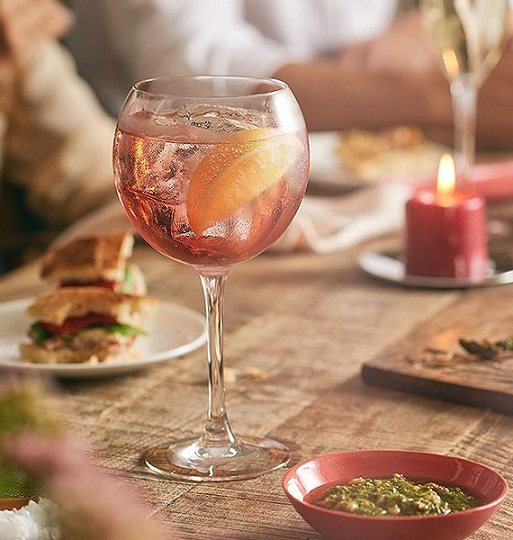
Italian Kiss: fill a highball glass with ice, add 1 part Martini Rosato, 1 part Martini Bianco and 4 parts lemonade to taste. All this splendor is set off by 2 drops of Angostura, giving the cocktail a recognizable specific flavor.
Martinez: 1 part Martini Rosato, 2.5 parts Martin Millers gin, dash of Angostura.
Martini Rosato Spiritz: 60 ml each Martini Rosato and Martini Prosecco, add 45 ml sparkling water, serve with strawberry slices, pink grapefruit.
Apicius: 1 part strawberry liqueur, 1 part vodka, 2 parts Martini Rosato. Pour everything into a shaker in the correct order (Rosato, liqueur, vodka), stir, pour into glasses.
Apricot (apricot): mix dry martini, Rosato, apricot liqueur and gin in a shaker in equal portions, add one drop of apricot syrup, pour the mixture into a cocktail glass.
Martini Santeria: 2.2 parts Bacardi rum, the same amount of Martini Rosato, add ice, stir, pour into chilled glasses.
A cocktail with Martini Bianco has an explosive mint-citrus freshness. It is especially pleasant to drink it on hot summer evenings. Both men and women like it for its low-alcohol base and invigorating effect.
This drink is no less than 150 years old! Rumor has it that one traveler who dropped into Jerry Thomas's bar in the city of Martinez (USA) really wanted to try a completely new cocktail, and as a reward he offered a real gold nugget. Jerry Thomas was not at a loss and on the fly invented the famous Martinez cocktail with Martini and gin, deservedly receiving such a generous payment, and the drink was named after the city in which it was invented.
The history of this drink begins in the nineteenth century, when its recipe was exported from Scotland and became widespread in the northern states of America. It is worth noting that this drink was first introduced to the general public only in 1894 in a hotel next to which the famous Rob Roy opera took place. The opera's overwhelming success led to a popular drink being named after it.
Prepare
| Name | Quantity |
| -whiskey- | 60 ml |
| "Martini Rosso" | 40 ml |
| angostura | 1 ml |
| zest | 1 PC. |
| ice | 300 g |
How to do
- Mix 40 ml Martini Rosso and 60 ml whiskey.
- Add 1 ml angostura.
- Add 300 g of frozen water cubes and stir.
- Strain through a strainer into a martini glass.
- Decorate with orange zest on a skewer.
This cocktail mix is unusual in that it contains cranberry juice. It gives a pleasant bitterness and a special piquant note in taste, which true gourmets will definitely notice.
Prepare
| Name | Quantity |
| "Martini Bianco" | 50 ml |
| cranberry juice | 75 ml |
| fresh orange | 75 ml |
| orange | 80 g |
| ice | 180 g |
How to do
- Fill a tall cocktail glass with 180 g of ice.
- Pour 75 ml of fresh juice and 50 ml of Martini Bianco into it.
- Add 75 ml cranberry juice and stir.
- Decorate with two orange slices.
The classic mojito has a huge number of fans, so we suggest trying a new variation of this popular drink and preparing it not only with white rum, but also with vermouth and limoncello. You will be surprised by the results.
Prepare
| Name | Quantity |
| "Bacardi Carta Blanca" | 40 ml |
| "Martini Extra Dry" | 30 ml |
| limoncello | 20 ml |
| angostura | 1 g |
| sugar based syrup | 20 ml |
| soda | 75 ml |
| lime (lemon) | 20 g |
| mint | 3 g |
| small ice fragments | 200 g |
How to do
- Place 3 g of mint leaves in a tall cocktail glass.
- Add 200 g of fragments.
- Pour in 20 ml syrup, 20 ml limoncello, 30 ml vermouth and 40 ml Bacardi Carta Blanca.
- Add 75 ml of soda and stir.
- Add 1 g angostura.
This cocktail was first mentioned in 1930 in the cocktail list of the Savoy Hotel. Authorship has never been established. Today there are several variations using smoky scotches and classic malt whiskeys. By the way, we recommend adding Sicilian orange instead of regular orange, and you will see how this wonderful mix will sound in a new way.
Prepare
| Name | Quantity |
| whiskey | 25 ml |
| "Martini Rosso" | 25 ml |
| cherry liqueur | 25 ml |
| fresh orange | 25 ml |
| ice | 200 g |
How to do
- Mix 25 ml fresh juice, 25 ml cherry liqueur, 25 ml vermouth and 25 ml whiskey.
- Add 200 g of frozen water cubes and shake well.
- Strain the drink into a martin maker through a filter.
- If desired, garnish with a dessert cherry on a skewer.
This is just another variation of a simple cocktail with vermouth, tonic and citrus juice. However, their taste differences are pronounced, so we recommend trying both options to determine your preferences.
Prepare
| Name | Quantity |
| tonic | 100 ml |
| "Martini Rosso" | 100 ml |
| orange | 30 g |
| ice | 60 g |
How to do
- Pour 60 g of ice into a red wine glass.
- Pour in 100 ml vermouth and 100 ml tonic.
- Stir the mixture thoroughly.
- Garnish with an orange slice.
If you prefer unusual cocktails with a spectacular presentation, then this is a win-win option. This drink belongs to the category of burning cocktails, which in itself attracts attention, and the taste is guaranteed to please everyone without exception.
Prepare
| Name | Quantity |
| —"Sauza Silver"— | 20 ml |
| "Martini Rosso" | 20 ml |
| triple-sec | 20 ml |
| "Campari" | 20 ml |
| lemon | 20 g |
| ice | 60 g |
How to do
- Pour 60 g of ice into a low, thick-bottomed glass glass.
- Pour in 20 ml Martini Rosso and 20 ml Campari.
- Place a round lemon slice into a glass.
- Separately, pour 20 ml of tequila and triple sec into the shot glass.
- Light the prepared shot and pour it into a glass, stir.
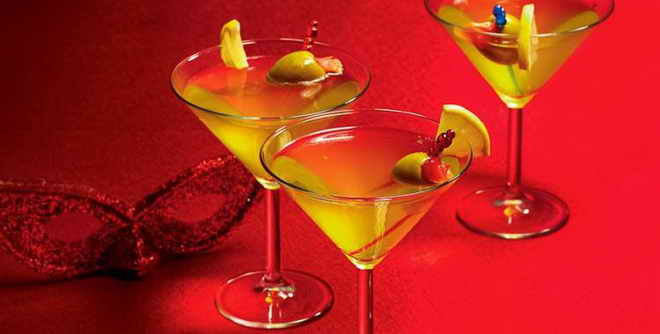
We would like to draw your attention to a few more drinks that will allow you to diversify the bar menu at a house party or simply delight yourself with a new alcoholic mix every time:
- Cuba libre: golden rum, lime juice, cola, lime (lemon) and ice;
- Pina Colada: Bacardi Carta Blanca, Bacardi Carta Negra, coconut syrup, lime juice, pineapple and ice;
- Bloody Mary: vodka, tomato juice, lemon juice, celery stalks, Tabasco sauce, Worcestershire sauce, salt, pepper and ice;
- Tequila boom: silver tequila, sprite.
Surely you are already eager to prepare all the proposed mixes with your own hands and expand your skills in this area, because it is so interesting and exciting that you want to cook not only for yourself, but also for all your acquaintances and friends. We wish you success in this and look forward to your feedback in the comments.
Let's look at popular vermouth-based alcoholic drinks that you can prepare yourself at home.
"Manhattan"
Ingredients:
- Angostura – 2 milliliters;
- ice – 150 grams;
- red vermouth – 30 milliliters;
- whiskey (bourbon) – 60 milliliters.
Recipe: mix all ingredients in a shaker, pour into a glass through a sieve (to remove any remaining ice), garnish with a cherry. The Manhattan is served with a straw.
"Negroni"
Ingredients:
- gin – 30 milliliters;
- Martini "Rosso" - 30 milliliters;
- ice – 150 grams;
- Campari bitter – 15 milliliters.
Views and fortress
Martini is a type of vermouth. As a rule, the strength of vermouth is from 11 to 13 degrees. The strength of the martini is generally found around these numbers, depending on the type.
The lightest is Martiti D'Oro. It contains only 9% alcohol. It's almost a cocktail with honey, citrus and vanilla aroma. Taste – white wine with fruity tones.
Other types are stronger than vermouth. The fact is that the taste of herbs intensifies and becomes more balanced and harmonious with increasing alcohol content. Therefore, types of martinis with artificially high degrees are especially tasty. It is their taste and aroma that for many is a symbol of sophistication and sweet life. This:
- Martini Fiero – 14.9%: with a rich taste and aroma of blood orange;
- Martini Bianco – 16%: spicy aroma and mild taste with minimal bitterness;
- Martini Rosso –16%: rich herbal aroma and bitter taste;
- Martini Rose – 16%: a mixture of white and red wine, hints of cinnamon and cloves.
These types of martinis are adored by women for their tart, spicy taste and low alcohol content. They can be drunk in their pure form, savoring every sip, and they differ favorably from liqueurs in their lack of cloying. Also, these types of martinis are an ingredient for a large number of various cocktails. Men sometimes dilute martinis with vodka, this does not lose the taste and aroma. It is customary to snack on a martini with an olive on a skewer.
Stronger types include:
- Martini Extra Dry – 18%: low sugar content;
- Martini Gold – 18%: ginger, orange, lemon, saffron and other exotic spices;
- Martini Bitter – 25%: bright, rich bittersweet taste.
These types also have many fans and a large number of cocktail recipes in which they are included. Bitter tastes more like a bitter herbal tincture rather than vermouth. But such alcohol is in demand. Olives as a snack will not be enough here. Martin iBitter is served with citrus fruits, pineapple and berries. Hard cheese is also suitable.
Now we know how many degrees the drink should contain.
Martini calories
The main product that has made it famous is vermouth, although in addition to them the brand produces high-quality sparkling wines. Since vermouth often acts as an aperitif, and therefore is consumed regularly, it is important for those who watch their diet to know how many calories are contained in different types of Martini, such as Bianco, Rosso or Extra Dry. .
At the same time, the calorie content of Martini alcohol-based cocktails often varies significantly not from the type of vermouth itself, but from additional ingredients.
What alcoholic drinks does it produce?
- “Rosso” is the first mass-produced vermouth produced since 1863. It is distinguished by a rich amber color, a strength of 16% and the mandatory content of caramel in the composition.

- The Extra Dry Green Martini, nicknamed for the color of the bottle, has been produced since 1900. The strength of the drink is 18 degrees, while there is practically no sugar in the composition. The color of the liquid is straw yellow, the aroma is dominated by notes of lemon, raspberry and iris. The calorie content of Martini Extra Dry is 112 kcal per 100 ml.
- "Rosato" is a pale pink vermouth, produced since 1980, is a product of a combination of red and white wine and contains 15% alcohol. In the organoleptic taste, cinnamon and cloves are clearly audible.
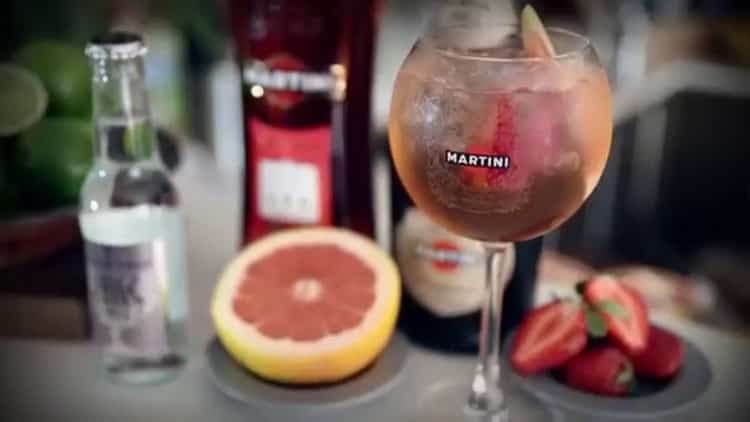
- Bianco is a light straw-colored drink whose production was launched in 1910. The strength is 16%, the taste is soft, with notes of vanilla and spices. The calorie content of Martini Bianco vermouth is 152 kcal per 100 ml.
- “Doro” is a light white wine-based vermouth with a strength of 9 degrees. Launched in 1998 and targeted at the markets of Germany, Denmark and Switzerland. The flavor and aroma properties of the drink are dominated by honey, citrus fruits, nutmeg, vanilla and coriander.
- Fiero is a drink with a rich orange aroma, which was launched in 1998 with an eye on the markets of Belgium and the Netherlands. The strength is 15%.

- “Bitter” is made from pure alcohol, not wine, and is distinguished by its thick ruby color and pronounced bitterness in taste. Invented by the creator of the Martini brand in 1872, it was launched into mass production only for the 150th anniversary of the company in 2014. The drink contains about 30 ingredients: herbs, fruits and flowers. Alcohol content is 25%.
- "Spirito" is a liqueur characterized by a high strength - 33% - and a bittersweet herbaceous flavor. Initially positioned as a drink only for men, Spirito went on sale in 2013, starting in Russia.
- Reserva Ambrato is a premium white vermouth made using authentic 19th-century technology. It has a sweetish taste with citrus notes.
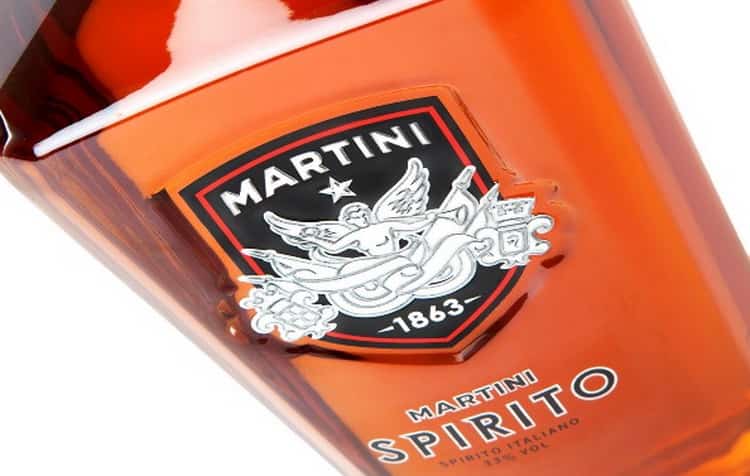
- “Reserva Rubino” is a premium red vermouth, which is produced using the original technology of the 19th century. It has a rich aroma of spices and green herbs and a bright, tart taste.
- “Gold Dolce & Gabbana” is a premium vermouth produced jointly with the fashion house “Dolce & Gabbana”. This extraordinary drink with an 18-degree strength consists of many unique herbs and spices, such as Calabrian saffron, Spanish bergamot, Indonesian cubeba pepper, Indian ginger and Ethiopian miter.
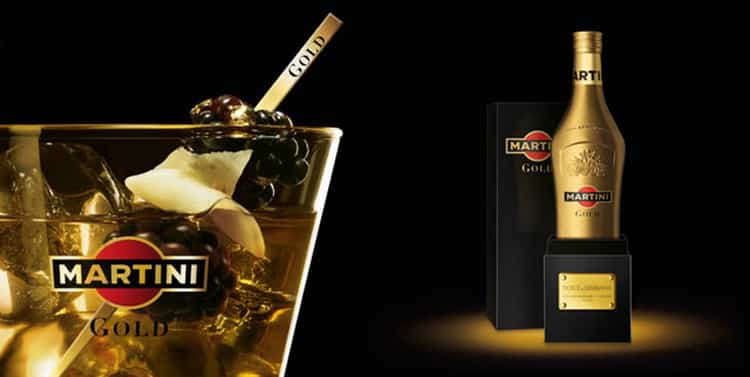
- “Asti” is a semi-sweet sparkling white wine based on white Muscat. It has a sweet taste and a bouquet of fruity notes: apples, peaches and oranges, as well as honey.
- Brut is a dry sparkling white wine with an 80-year history based on Prosecco and Pinot grape varieties. The soft velvety taste is complemented by a subtle pleasant aftertaste.
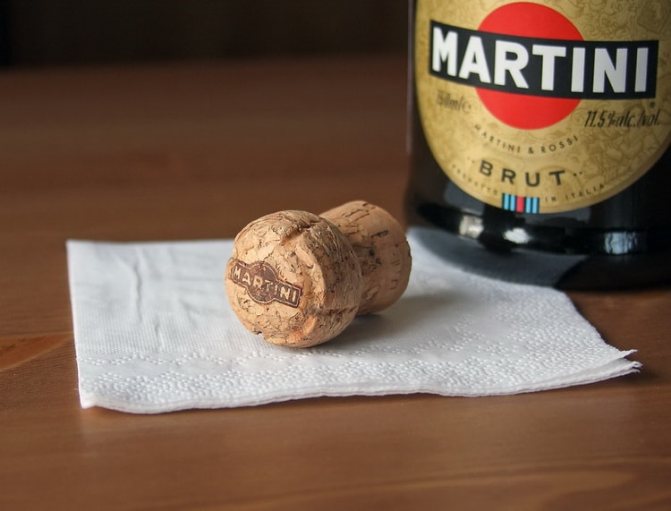
- —“Prosecco”— is a dry sparkling white wine made from the grape variety of the same name grown in the province of Venice. The flavor and aromatic bouquet is distinguished by bright but dry notes of green apples, peaches and grapefruits, and this splendor is complemented by a spicy aftertaste.
- "Rosé" is a pink sparkling wine based on grape varieties such as Malvasia, Muscat and Brachetto. The drink has a light, slightly velvety taste with notes of peaches, citrus and elderberry.
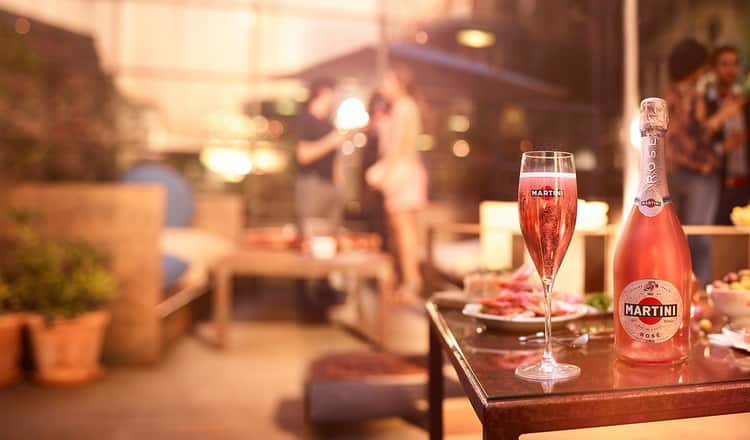
- “Royal Bianco” is a light 8% vermouth, released for the 150th anniversary, distinguished by a light straw color, as well as a vanilla flavor and a light refreshing aroma of fragrant herbs and flowers.

- Royal Rosato is a semi-sweet sparkling rose wine, released, like Royal Bianco, for the 150th anniversary of the company. It is made from the Glera grape variety and contains 8% alcohol. It has a rich spicy aroma with distinct notes of nutmeg, cinnamon and clove, as well as fainter notes of raspberry and lemon, while the bittersweet flavor is dominated by fruit and spice.
- “Bellini” is a sweet cocktail with 8 degrees of strength based on wine from Glera grapes and peach juice. It has a characteristic peach color and smell, and the taste is also complemented by notes of raspberries.
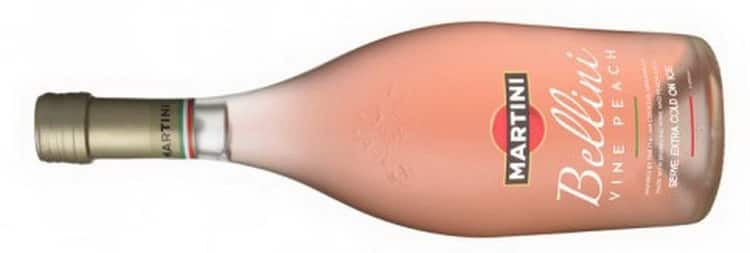
- “Gran Lusso” is a collectible vermouth, released in a limited edition of 150,000 for the 150th anniversary. The drink's recipe is based on Luigi Rossi's recipe from 1871. To produce the alcohol, we used wine from the Muscat Canello grape, aged for 1 year in barrels, and a barbera-based wine extract, aged in bottles for 8 years. It has a rich golden color, the aroma clearly includes notes of honey, nutmeg and balsamic, with light tones of rhubarb, wildflowers and quinine, and the balanced and rich bittersweet taste includes lavender, rose and aromatic herbs.

Did you know? The famous Martini cocktail, which contains vermouth, received this name because it was originally prepared only with alcohol from the company of the same name.
Calorie content of different Martini drinks
How the calorie content of different Martini drinks varies per 100 grams and what it depends on.
The greatest influence on the energy value of the drink is exerted by the sugar and alcohol content; the addition of juice, as in Belini, significantly increases the number of calories, while at the same time the number of different herbs on which the tincture is made does not have such a significant effect on this indicator.
| Name/Calorie content, kcal | in 25 ml | in 100 ml | in a bottle |
| "Bianco" | 38 | 152 | 0.75 l – 1140 |
| "Extra Dry" | 28 | 112 | 0.5 l – 560, 1 l – 1120 |
| "Rosso" | 36 | 144 | 1 l – 1440 |
| "Rosato" | 38 | 152 | 1 l – 1520 |
| "Reserva Ambrato" | 43 | 172 | 0.75 l – 1290 |
| "Reserva Rubino" | 43 | 172 | 0.75 l – 1290 |
| "Asti" | 20 | 80 | 0.5 l – 400, |
| "Doro" | 22.5 | 90 | 0.75 l – 675 |
| "Fiero" | 40 | 160 | 1 l – 1600 |
| "Bitter" | 65 | 260 | 1 l - 2600 |
| "Bellini" | 56.5 | 226 | 0.75 l – 1695 |
| "Royal Bianco" | 18 | 73 | 0.75 l - 547 |
| "Royal Rosato" | 18 | 73 | 0.75 l - 547 |
| "Prosecco" | 19 | 75 | 0.75 l - 562 |
| "Rose" | 34 | 138 | 0.75 l – 1035 |
| "Brut" | 19 | 75 | 0.75 l – 562 |
Calorie content of vermouth-based cocktails from Martini
Often, alcoholic drinks are not consumed in pure form, but mixed with other alcohol. In this case, to calculate calorie content, you need to take into account the weight fractions of each ingredient and their energy value. The table shows ready-made results based on the use of all classical components and their standard ratio.
| Cocktail name, additional ingredients | Calorie content of 1 serving, kcal |
| —“Dry Martini”—, also known as “Classic Gin Martini” | 235 |
| Gibson with gin | 415 |
| Martinez with gin, maraschino liqueur and Angostura bitters | 227 |
| "Imperial" with gin and -maraschino liqueur- | 307 |
| Pink Gin with gin and Angostura bitters | 113 |
| “Saketini” with gin (or vodka) and sake | 205 |
| Vesper with gin, vodka and Lille flavored wine | 483 |
| Manhattan with whiskey or bourbon and Angostura bitters | 239 |
| Rob Roy with Scotch whiskey and Angostura bitters | 179 |
| “Tekini” with —white tequila— | 106 |
| "Adonis" with dry sherry | 97 |
| "Intimacy" with Scotch whiskey | 204 |
| "Chrysanthemum" with absinthe and brandy | 39 |
| "Brilliant" with vodka | 171 |
| “Fabiola” with brandy and —orange liqueur— | 114 |
| "San Francisco" with sloe gin, orange and aromatic bitters | 269 |
| "Gin Harlow" with -rum- | 326 |
| Bronx with gin and orange juice | 260 |
| Metropolitan with brandy, sugar syrup and Angostura bitters | 182 |
| Park Avenue with gin and pineapple juice | 164 |
| Thanksgiving with gin, brandy and lemon juice | 140 |
| Waldorf with rye whiskey, absinthe and Angostura bitters | 239 |
| Aviation with gin, lemon juice, violet liqueur and Angostura liqueur | 181 |
| "The cream of the crop" with gin, honey syrup and lemon juice | 218 |
| Biltmore with gin, pineapple juice and maraschino liqueur | 760 |
| “English Rose” with gin, peach brandy, lemon juice and grenadine | 281 |
| “High Year” with gin, orange liqueur | 206 |
| “Kiss of the Soul” with whiskey, orange juice and Dubonnet | 281 |
| “Zvezda” with apple brandy and bitters | 176 |
| “Twentieth Century” with gin, chocolate liqueur, Lille aromatic wine and lemon juice | 208 |
Summarizing
For those who are interested in low-calorie vermouth, it is better to opt for the “sugar-free” “Extra Dry”; 100 ml of the drink contains approximately 5% of the daily calorie intake. “Rosso”, “Bianco”, “Rosato” and “Fiero” are 35% more filling than their “dry brother”, and their dosages need to be monitored more carefully, and the calorie content of “Extra Dry” is twice as high, respectively, 100 ml of such alcohol will be is no longer 5%, but 10% of the daily norm.
When drinking cocktails prepared by bartenders, it is important to remember that other spirits with higher strength and/or higher sugar content are almost guaranteed to contain even more calories than vermouth itself.
gradusinfo.ru
